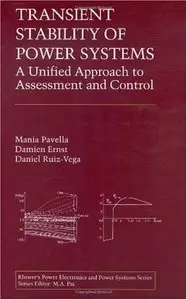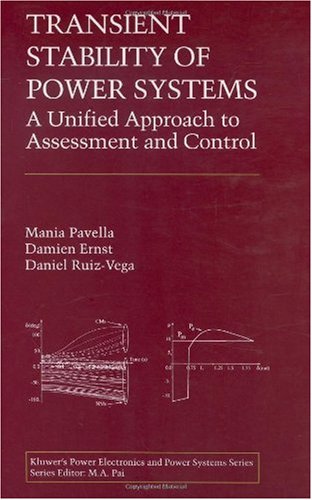Transient Stability of Power Systems: A Unified Approach to Assessment and Control By Mania Pavella, Damien Ernst, Daniel Ruiz-Vega
English | 2000 | 256 Pages | ISBN: 0792379632 | PDF | 22 MB
English | 2000 | 256 Pages | ISBN: 0792379632 | PDF | 22 MB
Transient Stability of Power Systems is a monograph devoted to a hybrid-direct temporal method called SIME (for Single Machine Equivalent). SIME processes temporal information about the multimachine system dynamics to assess and control any type of transient instabilities under any type and model of power systems. Two approaches may be distinguished depending upon the source of information used: `Preventative SIME' which relies on a time-domain program to simulate anticipated contingencies, and `Emergency SIME' which uses real-time measurements.
Preventative SIME mainly comprises two techniques: contingency filtering, ranking, and assessment; and (simultaneous) stabilization of harmful contingencies. The resulting preventative transient stability assessment and control (TSA&C) software can be used in all application contexts of transient stability studies. In a control center, for instance, its computational performances enable it to cope with very stringent requirements of real-time operation. Besides, interfacing SIME with an OPF algorithm allows combining transient stability constraints with specifics of the liberalized electricity market.
Emergency SIME is a novel closed-loop control technique which contains the transient instabilities caused by contingencies' actual occurrence. It relies on real-time measurements to predict (the size of) instability and, accordingly, to design and trigger control actions able to impede system loss of synchronism. Emergency SIME is particularly suitable for protecting important generation sites and can complement preventative SIME.
Both approaches rely on the same principles and basic software which yields a comprehensive and unified approach to TSA&C. The design of near optimal control techniques is a major asset of this software. This book provides extensive illustrations on a variety of power systems ranging from a simple 3-machine test system to real-world power systems comprising up to 627 generators and 4112 busses.
Transient Stability of Power Systems will be especially helpful to researchers, utility engineers, and software designers and developers who are developing various types of transient stability software packages.



